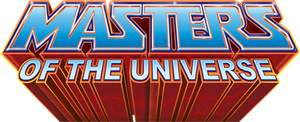Related Research Articles

Mattel, Inc. is an American multinational toy manufacturing and entertainment company founded in Los Angeles by Harold Matson and the husband-and-wife duo of Ruth and Elliot Handler in January 1945 and headquartered in El Segundo, California. Mattel has a presence in 35 countries and territories; its products are sold in more than 150 countries. Mattel consists of three business segments: North America, International and American Girl.
An action figure is a poseable character model figure made most commonly of plastic, and often based upon characters from a film, comic book, military, video game or television program; fictional or historical. These figures are usually marketed toward boys and adult collectors. The term was coined by Hasbro in 1964 to market G.I. Joe to boys.
The Mego Corporation is an American toy company that in its original iteration was first founded in 1954. Originally known as a purveyor of dime store toys, in 1971 the company shifted direction and became famous for producing licensed action figures, celebrity dolls, and the Micronauts toy line. For a time in the 1970s, their line of 8-inch-scale action figures with interchangeable bodies became the industry standard.
Kenner Products, known simply as Kenner, was an American toy company founded in 1946. Throughout its history, the Kenner brand produced several highly recognizable toys and merchandise lines including action figures like the original series of Star Wars, Jurassic Park and Batman as well as die cast models. The company was closed and merged by its corporate parent Hasbro in 2000.

Masters of the Universe is a sword and planet-themed media franchise created by Mattel. The main premise revolves around the conflict between He-Man and Skeletor on the planet Eternia, with a vast lineup of supporting characters in a hybrid setting of medieval sword and sorcery, and sci-fi technology. A follow-up series, She-Ra: Princess of Power revolves around He-Man's sister She-Ra and her rebellion against The Horde on the planet Etheria. Since its initial launch, the franchise has spawned a variety of products, including multiple lines of action figures, six animated television series, several comic series, video games, books and magazines, a daily newspaper comic strip, and two feature films.
Thingmaker, also called Creepy Crawlers, is an activity toy made by Mattel, beginning in 1964. The toy consists of a series of die-cast metal moulds resembling various bug-like creatures, into which is poured a liquid chemical substance called "Plasti-Goop", which comes in assorted colours. The mould is then heated to about 390 °F (199 °C) in an open-face electric hot plate oven. The Plasti-Goop is cured by the heat, and when cooled forms semi-solid, rubbery replicas which can be removed from the mould.
Dino-Riders is an animated television series that first aired in 1988. The cartoon was primarily a promotional show to launch a new Tyco toy line. Only fourteen episodes were produced, three of which were produced on VHS for the United States. The show aired in the U.S. as part of the Marvel Action Universe programming block.
Chatty Cathy was a pull-string "talking" doll originally created by Ruth and Elliot Handler and manufactured by the Mattel toy company from 1959 to 1965. The doll was first released in stores and appeared in television commercials beginning in 1960, with a suggested retail price of $18.00, though usually priced under $10.00 in catalog advertisements. Chatty Cathy was on the market for six years and was the second most popular doll of the 1960s after Barbie.

The Super Powers Collection was a line of action figures based on DC Comics superheroes and supervillains that was created by Kenner Products in the 1980s.

Batman action figures have been produced since the 1940s. These action figures, inspired by the character's appearance in comics and serials, were created by DC Comics and manufactured by various toy companies. These figures were made of various materials such as wood, tin, and plastic. They were typically between 6 and 8 inches in height and featured movable joints that allowed them to be posed in various positions.
Charmin' Chatty was a doll produced by the toy company Mattel in 1963 and 1964. The doll, introduced at the American Toy Fair in New York City in March 1963, belonged to a line of highly successful talking dolls introduced in 1960. Other chatty dolls in the line were Chatty Baby (1962), Tiny Chatty Baby (1963), Tiny Chatty Brother (1963) and Singin' Chatty (1965). Mattel trademarked the word chatty in the 1960s, and some of the packaging for its talking toys carried the tag line, "A Chatty doll by Mattel" or "A Chatty toy by Mattel". Mattel dolls such as Drowsy, Baby Cheryl, and Tatters had the tag line on their boxes that said, "A Chatty Doll by Mattel."
See 'n Say is an educational toy created by Mattel in 1964 after the success of Chatty Cathy. It was the first Mattel talking toy allowing children to choose the exact phrase as heard. Although the first release focuses on farm animal sounds, it had spawned through many themes from the alphabet, counting, nursery rhymes, to licensed products.
Bernard Loomis was an American toy developer and marketer who introduced some of the world's most notable brands including Chatty Cathy, Barbie, Hot Wheels, Baby Alive, and Strawberry Shortcake, but perhaps his biggest marketing success was bringing a then-unknown film property called Star Wars to the toy shelves.
Matty Mattel was the boy mascot for Mattel Inc. Toymakers. As the "King of Toys," Matty was the host and sponsor of TV's Matty's Funday Funnies in the 1960s. Matty was part of Mattel's advertising from 1955 to 1970 and then renewed in the 1980s, printed in Mattel warranty information.
Blaze was a rocking horse toy produced by Mattel toymakers and introduced in 1961. Blaze was featured prominently during children's television advertising. Unlike other rocking-horses of the time, Blaze was mounted on a stand that was said to be "untippable" and had no springs. The apparatus prevented pinched fingers, and was fitted out with a mechanism that moved the horses legs in "real life action." Another Mattel feature allowed Blaze to talk when you pulled his "Magic Ring." His talking voice unit was the very same one produced by Mattel and unveiled in 1960 in its talking Chatty Cathy doll, and later toys like the Talking Mister Ed puppet. Blaze could say 11 different things like, "How about some hay?"; he could also whinny and neigh. A toy like this, that could gallop and move realistically when the horse was rocked forward and backward, was something special.

Remco was an American toy company. Founded in the 1949 as Remco Industries, Inc., it is known for toys integrating technology and innovation from their inception.
Liddle Kiddles were dolls originally produced by toymaker Mattel Inc. in 1965. They were introduced at the New York Toy Fair in 1966 and put on the market soon after. Initially about 3 inches tall, they were small by doll standards. The sensation surrounding the dolls may have influenced other toy companies to produce their own tiny dolls.
Elliot Handler was an American inventor, businessman, and the co-founder of Mattel. With his wife, Ruth Handler, he developed some of the biggest-selling toys in American history, including Barbie, Chatty Cathy, Creepy Crawlers, and Hot Wheels.
G.I. Joe is an American media franchise and a line of action figures owned and produced by the toy company Hasbro. The initial product offering represented four of the branches of the U.S. armed forces with the Action Soldier, Action Sailor, Action Pilot, Action Marine and later on, the Action Nurse. The name is derived from the usage of "G.I. Joe" for the generic U.S. soldier, itself derived from the more general term "G.I.". The development of G.I. Joe led to the coining of the term "action figure". G.I. Joe's appeal to children has made it an American icon among toys.
References
Bibliography
- Kettelkamp, Sean. "Chatty Cathy and her Talking Friends", Schiffer Publishing Ltd., 1998.
